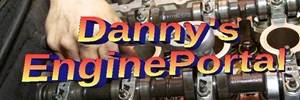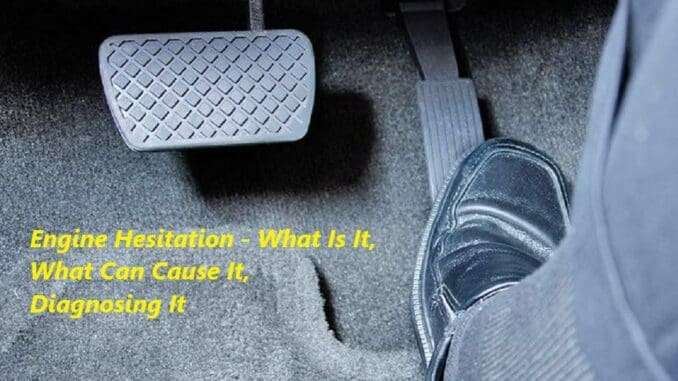
Engine hesitation, can make your vehicle seem like its bogging down, misfiring or stumbling, when you hit the gas pedal.
So, when you step on the gas, it will feel like, the power has been lost in the engine.
Consequently, after the engine hesitation, it goes back to normal. But, it may take a second or two to respond.
So, you should understand the causes of Engine Hesitation, so you can fix them right away. Otherwise, a simple issue can turn into a major one. And, that can cost a lot more money to repair, than if you took care of it earlier.
What Is Engine Hesitation
Everyone wants their vehicle to accelerate smoothly. However, it can be frustrating when that does not happen. Engine hesitation is a symptom that shows, an imperfect internal combustion in your engine.
Insufficient burning inside the engine, will make the vehicle hesitate when driving. This could happen during uphill acceleration, driving downhill, or when changing gears.
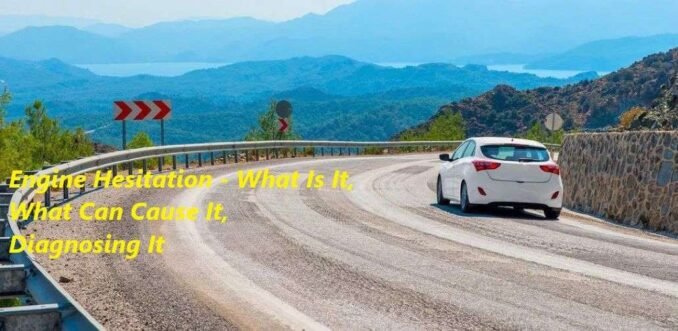
When trying to diagnose a hesitation or stumble, it’s important to work through, the diagnostic process carefully and logically. Don’t, jump to conclusions, and don’t assume the worst. Start with the simple stuff first (i.e. the air filter) and continue from there.
Also, remember that when interpreting any trouble codes, you need to be able to read the signs. And then, determine why a sensor is sending, an out of spec reading. Sometimes, a problem might trigger, a string of several trouble codes. Consequently, all of which need to be analyzed.
Topics For Common Causes Of Engine Hesitation Include:
- Dirty Air Filter
- Stuck Or Failed Mass Airflow (MAF) Sensor
- Clogged Or Leaking (EGR) Valve
- A Bad Ignition Coil
- A Failing Throttle Position Sensor (TPS)
- Clogged Fuel Injectors
- Dirty Or Clogged Fuel Filter
- A Failing Oxygen (O2) Sensor
- Catalytic Converter
Dirty Air Filter
So, your engine needs air, spark, and fuel to run. But, the air part of that equation can be compromised, if the air filter is clogged and dirty. It will literally smother the engine, hurting fuel economy and acceleration. Fortunately, this is the easiest one to fix. Just take the old air filter out of the air box , inspect it, and drop a new one in.
Stuck Or Failed Mass Airflow (MAF) Sensor
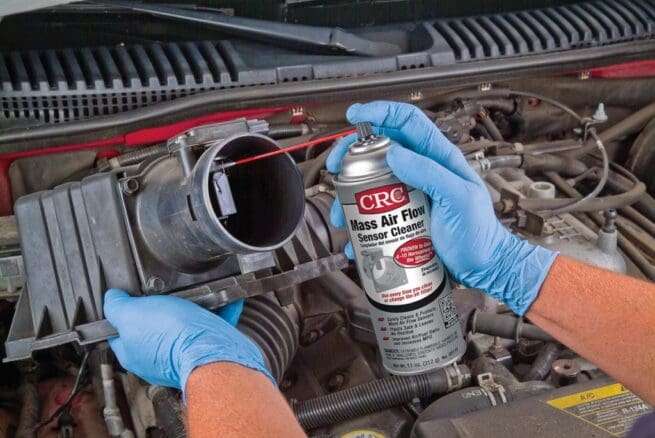
This is the next part to look at, if you’ve ruled out the air filter. The (MAF) sensor monitors the amount of air entering the engine. Then, it sends that information to the engines computer, so it can set fuel metering accordingly. A stuck or failed (MAF) sensor, will throw these readings off. And, may result in stumbling, and engine hesitation. This is one that, may or may not register, a trouble code.
Clogged Or Leaking (EGR) Valve
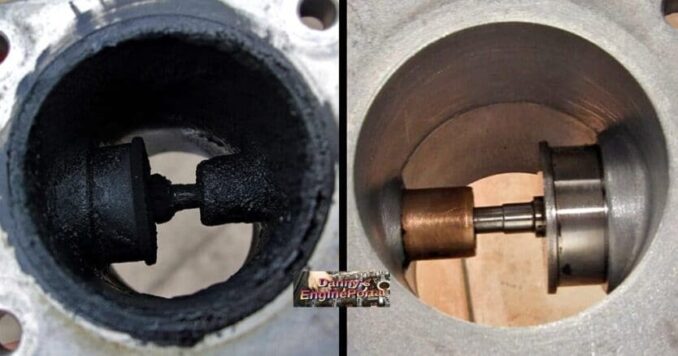
The (EGR) valve, is an emission control device. It directs a portion of the exhaust gases, back into the engine to be reburned. When this valve becomes too saturated with carbon, it can begin to stick.
Also, the (EGR) position sensor can fail and send an, out of spec reading to the engine computer. Consequently, turning on the Check Engine light (CEL). (this commonly registers as trouble code P0406).
When The (EGR) Sensor Is Sending Voltage Readings, That Are Too High Or Too Low, It Can Result In:
- Engine stumbling
- Engine hesitation
- Surging at part throttle, and light load
- Poor fuel economy
- Rough engine idle
- Heightened emissions
A Bad Ignition Coil
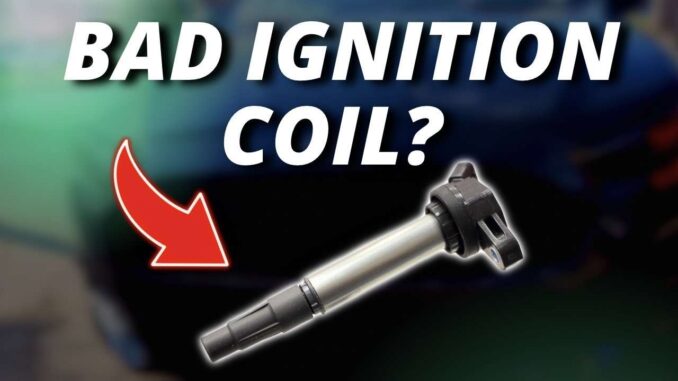
Just about all vehicles from model year 2000 on, are equipped with ignition coils on each spark plug. When a coil starts to fail, it can cause hesitation, stumbling, and surging. And, as it gets worse, it can result in bucking, and an extremely rough running condition. The good news is that, coils are easy to access and replace. Usually needing nothing more than, a Phillips head screwdriver or a small nut driver.
A Failing Throttle Position Sensor (TPS)
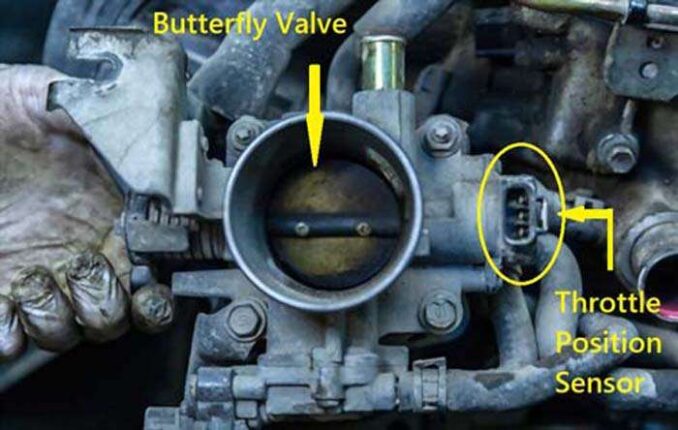
The (TPS) informs the engine computer, of how much pressure is being put on, the accelerator pedal. And, how open the throttle itself is. The computer, then adjusts ignition timing, and fuel metering accordingly. When the (TPS) is starting to fail, the computer’s strategies are thrown off. So, the engine will have trouble, maintaining an idle or responding to the accelerator. This one will usually, trigger a trouble code, and turn on the (CEL).
Clogged Fuel Injectors
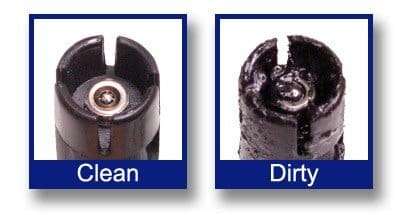
These tiny nozzles, deliver a spray of fuel into the cylinder. Where, it mixes with air, for compression and combustion. Usually, fuel injectors last for the entire life cycle of an engine. But, they do become clogged or start to fail in some instances. A failing or dirty fuel injector, can cause a regular misfire. Which, can eventually escalate to stumbling, and hesitation.
Dirty Or Clogged Fuel Filter

The fuel filter can cause loss of power, poor fuel economy, stumbling, engine hesitation, or even a no start condition. Unfortunately, this part is located in the fuel tank, on most newer vehicles. But, if the vehicle has an external fuel filter, it’s inexpensive, just replace it. Likewise, a failing fuel pump (also mounted in the tank), can cause fuel starvation. Especially, when the vehicle is heading up an incline.
A Failing Oxygen (O2) Sensor

The (O2) sensors are positioned in the exhaust stream. Usually, with one closer to the exhaust manifold, and one further down the exhaust pipe. They monitor the oxygen content of the exhaust, in proportion to the other gases. Consequently, sending this information back to the engine computer, for emissions control, and fuel metering decisions.
A Failing (O2) Sensor Will Cause:
- A rich running condition
- Black smoke from the exhaust pipe
- Poor fuel economy
- Loss of power
- Engine hesitation, and stumbling
Catalytic Converter
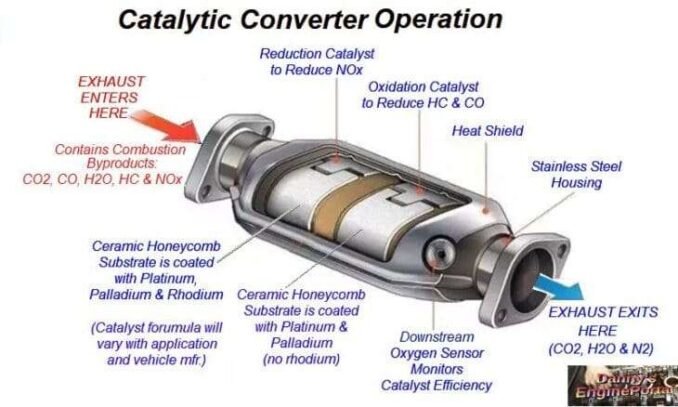
Since the ’70s, the catalytic converter, has been one of the primary emission control systems. The catalytic converter, is located in the exhaust stream, and runs at extremely high temperatures. As a result, it can literally incinerate certain noxious exhaust gases, before they can make it out the exhaust pipe. Catalytic converters usually last the entire service life of the vehicle, but they’ve been known to fail. A failing catalytic converter, will result in loss of power, poor fuel economy and stumbling.
Diagnosing Engine Hesitation
Start by checking the engine computer with a scan tool, for any fault codes. A code P0171 and or a P0174, indicate the engine is running lean. This means there is too much air and or not enough fuel. Consequently, the air/fuel mixture, is not being properly, enriched or is going lean. Possibly, the ignition system is weak, and is misfiring when the engine comes under load.
Check sensor responses with a scan tool, by looking at, the various sensor PIDS. Consequently, if the inputs from any sensors are inaccurate or missing, the engine computer may not add enough fuel. As a result, causing the fuel mixture to go lean. And, cause a misfire that produces an engine hesitation or stumble, when accelerating or opening the throttle.
Other Things To Consider Include:
- The amount of fuel added by the computer, when the throttle opens, may also be insufficient. As a result, of the fuel injectors being dirty, or the fuel pressure is low.
- The (O2) sensors in the exhaust monitor the air/fuel mixture. So, the computer can adjust fuel trim as needed, to maintain the proper air/fuel ratio.
- Fuel trim adjustments can compensate for dirty injectors, and or low fuel pressure to a certain extent. But, occur too slowly, to offset a throttle hesitation problem.
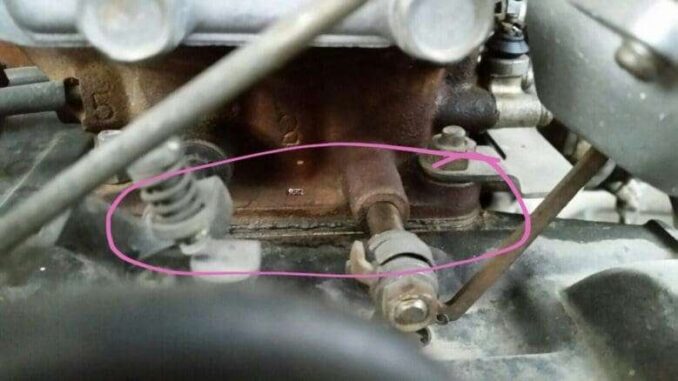
Additional diagnostic checks, may include searching for vacuum leaks, inspecting and cleaning the (EGR) valve. Also, measuring fuel pressure and volume, removing and inspecting the spark plugs, etc.
Conclusion
So, repairs will depend on, what is causing the engine hesitation, and sometimes surging. Also, if the cause is fuel related, it may require cleaning the fuel injectors or fixing a vacuum leak. Finally, if the cause is ignition related, it may require spark plug replacement.
BY DANNY BENDER
